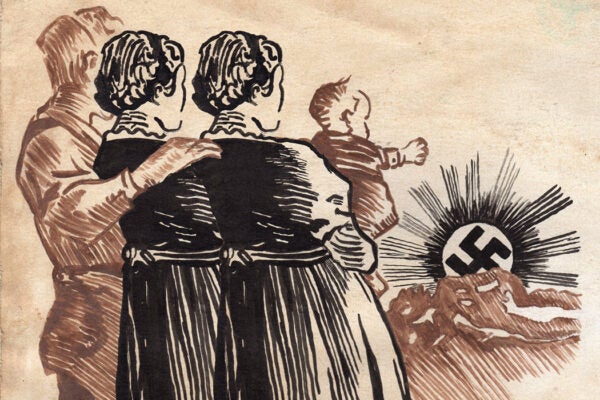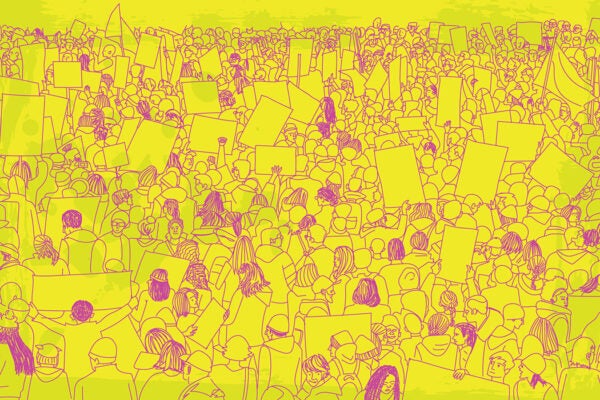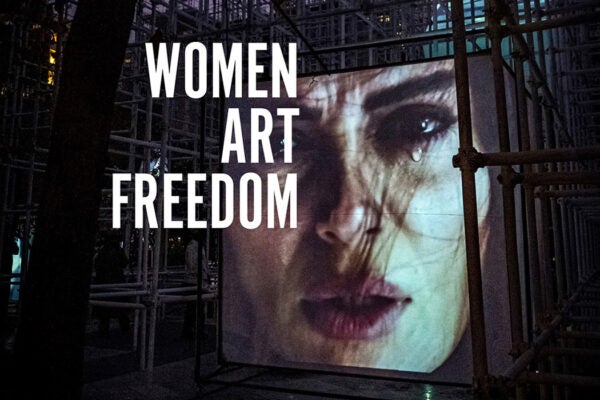In early 2011, newly elected Wisconsin governor Scott Walker fired the first salvo in what would become the latest war over labor rights in the US: Act 10, legislation effectively busting unions representing the state’s public employees. Floated as a “Budget-Repair Bill” intended to balance a budget shortfall, Act 10 required the state’s civil servants, from clerical workers to teachers to snow-plow drivers (but not police and firefighters), to pay more into their benefits plans—effectively lowering their pay across the board. It also struck down their respective labor unions’ rights to collectively bargain on anything other than base pay, stipulating that raises could not exceed the inflation rate. Images of snow-dusted labor protests around the Wisconsin capitol soon became emblematic of a nationwide onslaught against organized labor, as freshman Republican governors across the country unveiled conspicuously similar bills in Michigan, Indiana, Ohio, and Florida.
Mere weeks after their latest victory, Badger State Republican lawmakers were reportedly prepping legislation to make Wisconsin a “Right-to-Work” state, striking a further blow at private industry unions. A longtime pro-labor state like Wisconsin adopting such policies would seem to mark a stark reversal for labor in the US, but according to William P. Jones, professor of history at the University of Wisconsin in Madison, the shift is not happening in a vacuum.
Jones has written extensively on the history of labor unions and race—including his 2006 study for New Labor Forum, “The Legacy of Failure: Why the Solid South Has Proved so Hard to Crack” and the books The Tribe of Black Ulysses: African American Lumber Workers in the Jim Crow South and The March on Washington: Jobs, Freedom, and the Forgotten History of Civil Rights. The latter book examined African-American labor leaders’ roles in shaping the epoch-making 1963 civil rights gathering. He is currently working on a timely history of the public employee unions.
Jones sees the anti-labor wave of 2011 as just the latest in a long continuum of antipathy towards such unions. What’s new, Jones suggests, is that they appear part of a coordinated surgical strike by the Republican Party on a major donor base and voter-mobilization engine of its rivals.
Matthew Grimm: Labor has long been demonized by conservative forces as a bogeyman of corruption and collectivization. How has that view been brought to critical mass with public employee unions in recent years?
William P. Jones: It’s premised on the idea that [public employee unions] are these outsized forces that have hijacked the political system, that somehow public employees unions are electing their [pro-union] bosses, which is this common claim of the Right.
It’s ironic because public employees actually have fewer rights [than private sector unions], and that’s reflected in their compensation. If the status quo has always been one in which unions are highly marginalized and suspect, public employee unions are particularly marginalized and suspect and have never enjoyed an equal status.
It’s important to keep in mind that this is not just “now.” We have seen these backlashes, primarily focused against public employee unions, since the 1940s. There was a major backlash in the 1940s where public employees were called communist agents, basically set upon infiltrating the US government and causing strikes. Before they had any rights, people were already claiming public employee unions were out to paralyze the entire economy.
There was a similar backlash in the ’70s. There was actually an attempt to pass a federal law granting collective bargaining rights to public employees, and it was defeated largely by a national campaign launched by the National Right to Work Committee [a lobby bankrolled by corporate and far-right organizations] that accused public employees of trying to hijack the legislative process—this idea that if you force an elected official to bargain with a union, they’re no longer representing their constituents.
And these [backlashes] always happen in context of economic downturns. In the 1970s, there were these fiscal crises around the country in which public employees became the most obvious scapegoat. The most dramatic case of this is in Atlanta in the late 1970s. Maynard Jackson was the first black mayor of Atlanta, and he won the election with support from AFSCME [the American Federation of State, County and Municipal Employees]. They really did the ground game for him. And then there was a garbage workers strike under his watch, and he broke it. He said this is a threat to the fiscal management of the city. [Jackson’s thinking behind this move is] if the first black mayor goes down because he cannot handle this strike, it’s going to discredit the idea of electing black mayors. So, four years before Reagan fired the PATCO strikers, [Jackson] fired all these garbage workers, mostly black, all AFSCME. And, if anything, he was a civil rights liberal.
[The recent backlash] is also following a long period of a reduction in taxes, 20 years of either tax cuts or strict limitation on tax increases, so then, with an unplanned downturn in the economy, this creates [fertile ground for] an argument that these [public] employees are bankrupting the state.
We generally perceive the labor rights and civil rights as stages in one continuum, but, as you mention, it wasn’t always that pat.
There’s this tendency to be nostalgic for a golden era when “unions were strong,” but often when unions were stronger, they reinforced other problems. Not only did [some unions] enforce patriarchy, they reinforced white supremacy. Particularly in terms of things like employment discrimination and housing discrimination, black activists met with resistance in the North and the South. Employment discrimination in a place like Detroit or in Chicago was keeping black workers out of the best unionized jobs in the country. [While] there are lots of cases of black and white workers in those cities uniting in order to build unions, there are also cases of white workers shutting out black workers.
In New York City—so even if you look at a city where unions were most broadly accepted—in the late 1940s, hospital workers had no union representation rights, no collective bargaining rights. These were almost all African Americans and Caribbean immigrants. This shows how unequal and stratified this system was, that if that could be the case in New York, you can imagine what it was like to be a hospital worker in Memphis. New York would pass laws in the ’50s giving public workers the rights to form unions and bargain collectively, but, importantly, the centerpiece of those laws were prohibitions on strikes and massive retaliations for strikes, the ability to throw union leaders in prison, fines that would basically cripple them. [And those laws] are still on the books.
But you’ve also written about how, in the South, the movement, such as it existed, dovetailed somewhat with civil rights.
The irony with the South—there’s a really fascinating book by Ira Katznelson looking at the origins of the New Deal, and he argues that support for economically egalitarian policies was being pushed most vehemently by Southern Democrats. The South was the poorest part of the country, where they needed those economic policies the most—but they insisted on excluding African Americans from [New Deal employment and public works programs]. The way in which they resolved the contradiction was to push for federal stimulus money—so, for example, military bases could be constructed in a way that did not disrupt the racial divisions, the Jim Crow system, but [the public investments] would also lift regional economies.
And [the Southern Democrat/New Deal compact] doesn’t really break down until the ’60s, when you get people like George Wallace, Strom Thurmond—people who started as populist New Deal Democrats—who take up white supremacy in some ways as a slogan in reaction to the Brown [v. Board of Education] decision and this [regional] perception that the whole [educational] infrastructure is breaking down.
So they were all for “big government” when it buoyed a segregated economic system, but not so much when “big government” entities, or the civil rights leaders increasingly petitioning them, started suggesting those economic fixes be colorblind.
What was interesting about the March on Washington is that it was an attempt by civil rights activists to pick and choose. To say, “Let’s keep the economically egalitarian policies of the New Deal, but let’s ensure everybody has a right to a living wage, a right to a job.” They believed that, if the private sector was not going to provide jobs for everybody, the federal government had to pick up the slack. If we are to believe people have a right to decent housing, to decent education, and then we’re going to argue that everybody has that right, what does that mean? And it opened up this whole can of worms. And public employees actually became a really important part of that.
A number of cities begin informally bargaining with public employees in the ’50s—Milwaukee, New York—and then in 1959, Wisconsin passed the first statewide law that created a formal process for bargaining—with elections overseen by a state agency. Unions existed before this, but they could not reach legally binding agreements with the state agencies.
There was a lot of coalescence in the late 1960s between civil rights activism and public employee union activism, the most famous case being in Memphis in 1968. This was an AFSCME local that represented the garbage workers there. In Memphis, there were two groups of garbage workers. The truck drivers, who were white and often union members, saw themselves as a completely different workforce from the guys riding the truck. Who were all black. In Memphis and a lot of cities, these were day laborers. So they were hired every day—you show up, they might hire you. You could work for the city 30 years and every day you could be hired and fired, no benefits, no rights on the job at all.
Martin Luther King Jr.’s last speech really eloquently addresses this when he says, and I’m paraphrasing, “You have people like doctors, who are respected, because when people get sick in Memphis, you go to a doctor and the doctor keeps us all healthy. But you can imagine if the garbage workers don’t do their work, we’re all going to get sick, right?” His point was, if people do hard work that benefits society, we need to recognize that value by giving them some dignity, giving them a decent wage, respecting their right to organize.
I think of that iconic sign from the Memphis sanitation strike, “I AM A MAN,” and in my mind, I can’t tell you if it’s a “civil rights image” or a “labor image.”
And that was the point. To say the two are really intertwined. And it became very important in the South. There was a wave of unionization in southern cities, not just Memphis, but Birmingham, Atlanta, Miami. There was a big strike the following year in Charleston, SC, of hospital workers, who used the slogan “I AM SOMEBODY.” And it was AFSCME that took up this message very powerfully in the ’60s and ’70s, and really integrated this idea that they were fighting not just for the rights of workers, but for social equality, for racial equality, it even became a very powerful feminist union.
During the 2011 labor protests in the Upper Midwest I saw someone holding a sign that said, “I AM A TEACHER.” But on the other side, this latest round seemed pretty coordinated across a big swath of the country.
One thing we did see in this last backlash—and I’m not sure this was the case in other periods—was a very clear political calculation. Public employee unions tend to support Democrats, particularly in terms of mobilization. And that’s true in Wisconsin and a lot of places where the primary centers for political mobilization are union halls. In terms of donations, you heard over and over again, “Public employee unions are Democrats’ biggest contributors, they throw money, they get these pro-union Democrats elected, then these pro-union Democrats turn around and raise wages and bankrupt the state. So this is a vicious cycle that needs to be broken and the only way to break it is to break the power of the unions.”
So you’re not only targeting a revenue stream for the opposition, but also their “ground game.”
Right, and again that’s really based on an overinflated idea of what these unions actually are. Because they’re really key at the ground game, at mobilizing voters, but they’re not telling people how to vote. In fact, great evidence of that is, in 2010, Scott Walker got a sizable portion of the union family vote. So these people are being reminded to vote by the union, maybe even driven to the polls by the union, but they’re not consistently voting for the people the union wants them to. These are not monolithic blocs of power, they’re mobilizing and, I would argue, democratizing organizations. They have a tremendous democratic impact on society, but they’re not telling these people how to vote.
Many of the statehouses that broke public-employee unions also floated voter ID laws, which liberal critics have castigated as new versions of Jim Crow laws. Coincidence?
No, it’s not a coincidence. I don’t think there’s really any doubt that there was a push within the GOP to do a number of things that would ensure their continued electoral viability in the face of a massive demographic shift in the country that was not favorable to them. They’re rewriting electoral districts, putting restrictions on voting rights, and, if there was one institutional base of the Democratic Party that you could [disempower], it was public employee unions. And I think Republican politicians were pretty forward about that. The only other justification for those moves is voter fraud, right, and if you can find me some examples of that, maybe I’ll back away from this position. [laughs]
It was clearly a perception that the party needed a way to shift the political terrain in ways that would be beneficial to them. And they did that, I think very successfully.
By what metric, voter suppression or union-busting?
Both. There’ve been several studies showing that the estimated number of voters prevented from registering was at or over the differences [in electoral returns]. These were very tight races, so a few people being prevented from registering made a huge difference. But if you look in this state, major public employee unions, which previously had been primary centers for voter mobilization, their membership has plummeted, and there’s no way that didn’t have an impact.







